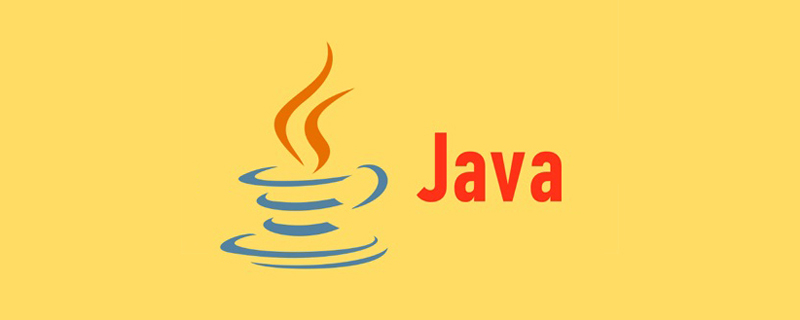Implementation of instance parsing Java infix expressions
本篇文章给大家带来了关于java的相关知识,其中主要介绍了关于中缀表达式是一个通用的算术或逻辑公式表示方法。中缀表达式不容易被计算机解析,但仍被许多程序语言使用,因为它符合人们的普遍用法。下面一起来看一下,希望对大家有帮助。

推荐学习:《java视频教程》
1.概念
什么是中缀表达式,什么是后缀表达式?
从小学开始学习的四则运算,例如:3+(5*(2+3)+7) 类似这种表达式就是中缀表达式。中缀表达式人脑很容易理解,各个算符的优先级,人脑也很容易判断,先算括弧里的,再算*,再算+,-
但是这种表达式很不利于计算机计算,通过某种方式把前缀表达式转换为后缀表达式方便计算机进行计算,如3+(5*(2+3)+7)的后缀表达式就是3,5,2,3,+,*,7,+, +。这个表达式计算机很容易计算,为什么容易计算,通过算法流程2,就会一个深入的理解。
2.算法流程
如何把中缀表达式转换成后缀表达式?比如说3+(5*(2+3)+7)的转成后缀表达式的流程如何?
操作符优先级:
- +,- 小于*,/
- + 等于 -
- * 等于 /
左括号和右括号作为特殊操作符特殊处理。(碰到’(’不用判断优先级直接入操作符栈,碰到’)’,也不用判断优先级,直接出操作符栈)
大致算法掌握以下几个流程:
准备两个栈,一个是数字栈A,一个是操作符栈(+,-,*,/(,))B等
1.0 对于数字栈A,遇到数字直接入栈A。
2.0 对于操作符栈B,分几种情况
2.1 碰到 ‘(‘操作符直接入栈
2.2 碰到 ‘)’操作符,不停的把操作符栈B出栈,直到遇到’)’。(把’(’到’)’之间的弹出的操作符依次入栈A)
2.3 碰到’+,-,* /’比较当前元素(假设当前元素current)和B栈栈顶的操作符(假设栈顶元素是top)的优先级.
2.3.1 如果top >= current, B栈出栈且循环比较,直到top < current退出循环,且把 current入栈
2.3.2 如果top < current, 直接把current入B栈
3.0 扫描完整个字符串,如果B栈中还有操作符,依次出栈入A
按照上面算法演示3+(5*(2+3)+7)的流程:
1,碰到3,3入A栈 [3,]
2,碰到+,入B栈 [+,]
3,碰到(,入B栈 [+,(]
4,碰到5,入A栈 [3,5]
5,碰到*,*的优先级大于 (,入B栈[ +,(,*]
6,碰到(,入B栈[ +,(,*,(]
7,碰到2,入A栈 [3,5,2]
8,碰到+,入B栈[ +,(,*,(,+]
9,碰到3,入A栈 [3,5,2,3]
10,碰到),弹出B栈,直接到 ‘(‘,把弹出的操作符入A栈。B:[ +,(,*] A:[3,5,2,3,+]
11,碰到+, +的优先级小于B的栈顶元素 *,所以*从B出栈,入A,并把+入B。B:[ +,(,+] A:[3,5,2,3,+,*]
12,碰到7,入A栈 [3,5,2,3,+,*,7]
13,碰到),弹出B栈,直接到 ‘(‘,把弹出的操作符入A栈。B:[ +] A:[3,5,2,3,+,*,7,+]
14, 扫描完整个字符串,判断B是否为空,不为空把B栈的元素弹出,入A。当前不为空,所以最终A栈的元素为 A:[3,5,2,3,+,*,7,+, +]
所以最终A的后缀表达式是3,5,2,3,+,*,7,+, +
计算机拿到这个会怎么计算呢?流程如下:
- 碰到数字直接入栈
- 碰到操作符,直接弹出两个栈顶元素,通过操作符计算,把结果压入栈
通过步骤1,2循环计算,最终栈里只会有一个元素,这个就是表达式的结果。
我们来演练一下:
1,碰到数字3,5,2,3直接入栈A[3,5,2,3]
2,碰到+,弹出栈顶2,3,相加得5 入栈A[3,5,5]
3,碰到*,弹出栈顶5,5,相乘得25 入栈A[3,25]
4,碰到7,直接入栈A[3,25,7]
5,碰到+,弹出栈顶25,7,相加得32 入栈A[3,32]
6,碰到+,弹出栈顶3,32,相加得35 入栈A[35]
通过上面可以得知,计算机很容易计算,从左扫描到右就能把结果得出。
3 代码实现
mid2post 求后缀表达式
calcPostExp 拿到后缀表达式求值
cmpPriority 优先级比较
//优先级
bool cmpPriority(char top, char cur)//比较当前字符与栈顶字符的优先级,若栈顶高,返回true
{
if ((top == '+' || top == '-') && (cur == '+' || cur == '-'))
return true;
if ((top == '*' || top == '/') && (cur == '+' || cur == '-' || top == '*' || top == '/'))
return true;
if (cur == ')')
return true;
return false;
}求后缀表达式求值
vector<string> mid2post(string &str)
{
vector<string>vstr;
stack<char>cstack;
for (int i = 0;i<str.size();++i)//扫描字符串
{
string temp = "";
if (str[i] >= '0' && str[i] <= '9')//若是数字
{
temp += str[i];
while (i + 1<str.size() && str[i + 1] >= '0' && str[i + 1] <= '9')
{
temp += str[i + 1];//若是连续数字
++i;
}
vstr.push_back(temp);
}
else if (cstack.empty() || str[i] == '(')//若栈空或者字符为'('
cstack.push(str[i]);
else if (cmpPriority(cstack.top(), str[i]))//若栈顶元素优先级较高,栈顶元素出栈
{
if (str[i] == ')')//若当前字符是右括号,栈中元素出栈,入字符串数组中,直到遇到'('
{
while (!cstack.empty() && cstack.top() != '(')
{
temp += cstack.top();
cstack.pop();
vstr.push_back(temp);
temp = "";
}
cstack.pop();
}
else//栈中优先级高的元素出栈,入字符串数组,直到优先级低于当前字符
{
while (!cstack.empty() && cmpPriority(cstack.top(), str[i]))
{
temp += cstack.top();
cstack.pop();
vstr.push_back(temp);
temp = "";
}
cstack.push(str[i]);
}
}
else//当前字符优先级高于栈顶元素,直接入栈
cstack.push(str[i]);
}
while (!cstack.empty())//栈中还存在运算符时,出栈,存入字符串数组
{
string temp = "";
temp += cstack.top();
cstack.pop();
vstr.push_back(temp);
}
return vstr;
}对后缀表达式进行求值,主要是根据运算符取出两
int calcPostExp(vector<string> & vstr)//对后缀表达式进行求值,主要是根据运算符取出两个操作数进行运算
{
int num, op1, op2;
stack<int>opstack;
for (int i = 0;i<vstr.size();++i)
{
string temp = vstr[i];
if (temp[0] >= '0' && temp[0] <= '9')//如果当前字符串是数字,利用字符串流转化为int型
{
stringstream ss;
ss << temp;
ss >> num;
opstack.push(num);
}
else if (vstr[i] == "+")//若是操作符,取出两个操作数,进行运算,并将结果存入
{
op2 = opstack.top();
opstack.pop();
op1 = opstack.top();
opstack.pop();
opstack.push(op1 + op2);
}
else if (vstr[i] == "-")
{
op2 = opstack.top();
opstack.pop();
op1 = opstack.top();
opstack.pop();
opstack.push(op1 - op2);
}
else if (vstr[i] == "*")
{
op2 = opstack.top();
opstack.pop();
op1 = opstack.top();
opstack.pop();
opstack.push(op1*op2);
}
else if (vstr[i] == "/")
{
op2 = opstack.top();
opstack.pop();
op1 = opstack.top();
opstack.pop();
opstack.push(op1 / op2);
}
}
return opstack.top();//最终的栈顶元素就是求解的结果
}推荐学习:《java视频教程》
The above is the detailed content of Implementation of instance parsing Java infix expressions. For more information, please follow other related articles on the PHP Chinese website!

Hot AI Tools

Undresser.AI Undress
AI-powered app for creating realistic nude photos

AI Clothes Remover
Online AI tool for removing clothes from photos.

Undress AI Tool
Undress images for free

Clothoff.io
AI clothes remover

AI Hentai Generator
Generate AI Hentai for free.

Hot Article

Hot Tools

Notepad++7.3.1
Easy-to-use and free code editor

SublimeText3 Chinese version
Chinese version, very easy to use

Zend Studio 13.0.1
Powerful PHP integrated development environment

Dreamweaver CS6
Visual web development tools

SublimeText3 Mac version
God-level code editing software (SublimeText3)

Hot Topics
 Square Root in Java
Aug 30, 2024 pm 04:26 PM
Square Root in Java
Aug 30, 2024 pm 04:26 PM
Guide to Square Root in Java. Here we discuss how Square Root works in Java with example and its code implementation respectively.
 Perfect Number in Java
Aug 30, 2024 pm 04:28 PM
Perfect Number in Java
Aug 30, 2024 pm 04:28 PM
Guide to Perfect Number in Java. Here we discuss the Definition, How to check Perfect number in Java?, examples with code implementation.
 Random Number Generator in Java
Aug 30, 2024 pm 04:27 PM
Random Number Generator in Java
Aug 30, 2024 pm 04:27 PM
Guide to Random Number Generator in Java. Here we discuss Functions in Java with examples and two different Generators with ther examples.
 Armstrong Number in Java
Aug 30, 2024 pm 04:26 PM
Armstrong Number in Java
Aug 30, 2024 pm 04:26 PM
Guide to the Armstrong Number in Java. Here we discuss an introduction to Armstrong's number in java along with some of the code.
 Weka in Java
Aug 30, 2024 pm 04:28 PM
Weka in Java
Aug 30, 2024 pm 04:28 PM
Guide to Weka in Java. Here we discuss the Introduction, how to use weka java, the type of platform, and advantages with examples.
 Smith Number in Java
Aug 30, 2024 pm 04:28 PM
Smith Number in Java
Aug 30, 2024 pm 04:28 PM
Guide to Smith Number in Java. Here we discuss the Definition, How to check smith number in Java? example with code implementation.
 Java Spring Interview Questions
Aug 30, 2024 pm 04:29 PM
Java Spring Interview Questions
Aug 30, 2024 pm 04:29 PM
In this article, we have kept the most asked Java Spring Interview Questions with their detailed answers. So that you can crack the interview.
 Break or return from Java 8 stream forEach?
Feb 07, 2025 pm 12:09 PM
Break or return from Java 8 stream forEach?
Feb 07, 2025 pm 12:09 PM
Java 8 introduces the Stream API, providing a powerful and expressive way to process data collections. However, a common question when using Stream is: How to break or return from a forEach operation? Traditional loops allow for early interruption or return, but Stream's forEach method does not directly support this method. This article will explain the reasons and explore alternative methods for implementing premature termination in Stream processing systems. Further reading: Java Stream API improvements Understand Stream forEach The forEach method is a terminal operation that performs one operation on each element in the Stream. Its design intention is






